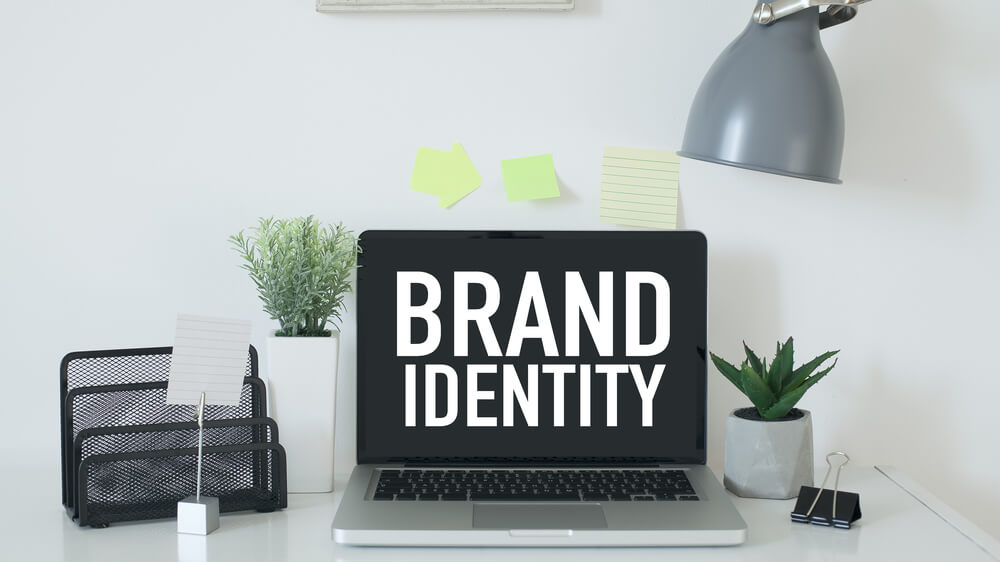
Comprehensive Guide To Drafting a Strong B2B Brand Identity
Like individual consumers, business-to-business (B2B) buyers prefer to engage with trustworthy companies. A strong brand helps by creating a positive image that eases this concern.
A robust B2B branding sets your business apart, builds confidence in potential clients, and boosts profitability. This article shows you the elements to build one:
- Memorable B2B logo.
- Brand colors and typography.
- Cohesive brand messaging and voice.
- Unique value proposition (UVP).
- Brand storytelling.
- Consistency across platforms.
Read this comprehensive guide to learn how to make your brand stand out. Let’s go!
Tired of investing in Search Engine Optimization without getting any results? See how Digital Authority Partners turns that around!
The Core Elements of B2B Branding
A strong brand identity has become increasingly crucial as buyers’ expectations evolve. As one of the best B2B marketing strategies, it:
- Differentiates you from the competition.
- Makes customers feel seen and more valued.
- Builds trust, confidence, and credibility.
- Creates a more memorable, satisfying user experience.
- Improves essential metrics, such as the customer lifetime value and engagement.
Creating a strong brand identity is non-negotiable whether you are an enterprise or a startup. The question is how.
The best B2B branding includes the following vital elements:
1. Logos
Visuals, such as logos, help express a brand’s personality, evoke emotions, and establish a meaningful connection with the audience.
Design an effective one with these tips:
- Keep it simple and professional. B2B companies often want their logos to reflect a serious, down-to-business image. Avoid anything too flashy or funky. Stick to classic, simple designs that stand the test of time.
- Incorporate recognizable symbols. Certain iconic symbols such as squares, rectangles, circles, or familiar objects (globes, gears, or bridges) help convey ideas ranging from structure to connectivity and support. Leverage shapes and symbols that your audience quickly understands.
- Use versatile color palettes. Avoid loud, trendy colors in favor of versatile palettes featuring grays, blues, greens, and the like. This allows the logo to pair well with various contexts and use cases over the years.
Analyzing Successful B2B Logos

NBA
This renowned sports logo features a transformed photograph of Lakers player Jerry West in a minimalist silhouette. The NBA logo stands out because it captures the essence of the game in a straightforward graphic. Complemented by a red, white, and blue tricolor scheme, the design also evokes patriotism.
This logo is a prime example of the significance of a visually clear representation that instantly communicates the essence of the brand or organization.
Barbie
With its playful pink vibe, the logo brings the iconic Barbie doll to life through a mix of excellent typography and vibrant colors. Since her debut in 1959, Barbie and her brand have evolved. However, the core identities, such as playful freedom, the power of creative imagination, and women’s power, remain.
The Barbie logo consistently stays classy and fun, speaking directly to its audience in an effective and eye-catching way.
When designing logos, focus on flexibility and professionalism and connect them with what the company does or provides. Keeping it clean and memorable goes a long way for B2B recognition and trust.
2. Colors
The right colors influence emotions, while consistent use across platforms fosters brand recognition. Although playing with shades and palettes seems tempting, the general rule is to limit the color scheme to three. This keeps the visuals sleek, clean, and professional, increasing their chances of rendering well on screens.
Pick the right colors for your B2B brand with these tips:
- Familiarize yourself with color psychology. This approach enables you to grasp how colors affect brand perception. For example, red usually triggers hunger, blue is calming, and yellow identifies with energy boost.
- Understand your brand. Define your brand’s personality, values, and target audience to guide color choices.
- Consider industry standards. Research your industry’s color associations for relevance.
- Reflect brand values. Choose colors that align with your brand’s values and messaging.
- Test for accessibility. Ensure that the shades appear accurate and do not overpower other visual elements.
3. Typography
Typography refers to the font style, appearance, and text arrangement. It is the creative manipulation of letters for more impactful designs.
Regarding branding, typography reinforces your message, adds more appeal for engagement, and ties up other visual elements. Consistency in the font choice across all materials fosters brand recognition, such as Coca-Cola’s Spencerian script or Apple’s San Francisco sans-serif.
Here are strategies when designing your typography:
- Align fonts with your brand values. For instance, opt for a dependable, reliable font if you are in healthcare.
- Focus on readability. Prioritize legibility across various platforms and materials for effective communication.
- Consider the industry’s tone. Choose fonts that resonate with the tone and expectations of your B2B industry.
- Limit font styles. Keep a cohesive look using limited font styles to maintain consistency.
- Test on different platforms. Assess how the chosen fonts appear on various platforms and devices. Some applications might not display your selected fonts.
4. Messaging and Brand Voice
Whether the tone is authoritative, friendly, or innovative, it needs to mirror your company’s personality and communication style.
Develop a strong brand voice with the following tips:
- Define the brand’s personality. Consider your core values, mission, and unique value proposition (UVP).
- Understand the target audience. Gain insights into the needs, preferences, and language of your B2B audience.
- Maintain consistency. Keep a uniform tone and messaging style across all communication channels.
- Craft a core message. Develop a concise and impactful central message that encapsulates your brand’s essence.
- Educate your team. Communicate brand guidelines and messaging strategies to your team to avoid having inconsistent online branding.
- Adapt to industry nuances. Align your messaging with specific standards and norms of your industry.
- Create a style guide. Develop a comprehensive style guide that defines the brand’s language, tone, and messaging.
5. Unique Value Proposition (UVP)
The UVP is a brief statement highlighting a product or service’s distinct benefits. It sets you apart from competitors and informs customers of the solutions you offer and why you are a better choice than others.
Follow these steps to craft a compelling UVP:
- Know your audience. Understand your target audience’s needs, preferences, and pain points.
- Analyze competitors. Evaluate what sets your brand apart from competitors and identify gaps in the market.
- Identify the benefits. Determine the unique advantages that your product or service provides.
- Be clear and concise. Express your UVP clearly and concisely, focusing on the most influential and unique aspects of your offering.
- Highlight solutions. Emphasize how your brand addresses customer challenges or fulfills specific needs better than the alternatives.
Honing in on what makes the brand exceptional transforms the UVP into a guiding force in shaping the brand identity and fostering a meaningful connection with the audience.
6. Brand Storytelling and Narrative
Brand storytelling weaves a narrative that emotionally resonates with the audience. It conveys the company’s mission, values, and journey. In addition, it helps brands delight audiences while communicating their value propositions.
How do you harness the power of brand storytelling? Here are the top tips:
- Follow a story path. Stick to an excellent storyline to smoothly guide readers through a well-structured beginning, middle, and end.
- Use honest conversations. In stories, dialogue breathes life into characters. In B2B, let your customers talk via testimonials, reviews, and case studies. These real experiences help potential customers relate.
- Focus on the main idea. Find the central theme of your content and weave it into your narrative. Buyers generally have universal motives such as desire for gain, fear of loss, comfort, security, emotional satisfaction, and pride of ownership.
- Keep a steady tone. Decide on a professional, friendly, authoritative, playful, or modern tone that suits your brand and audience and use it consistently in your content.
7. Consistency across Platforms and Collaterals
This involves maintaining uniformity in visual elements, messaging, and overall brand presentation across various channels such as marketing materials, websites, social media, and other touchpoints.
A consistent brand presence instills trust and recognition among the target audience and reinforces your reliability and professionalism. It also fosters a seamless and positive experience for customers and stakeholders.
Together, these components influence how people perceive and remember your brand.
Summing Up
The key to an exceptional B2B brand identity is to authentically convey its values, articulate its unique value proposition, and build trust with the target audience.
With a track record of success, Digital Authority Partners (DAP) seasoned professionals excel in elevating B2B brands. Partner with us to create a distinctive and potent brand. Contact us today for a free consultation.
Want To Meet Our Expert Team?
Book a meeting directly here




